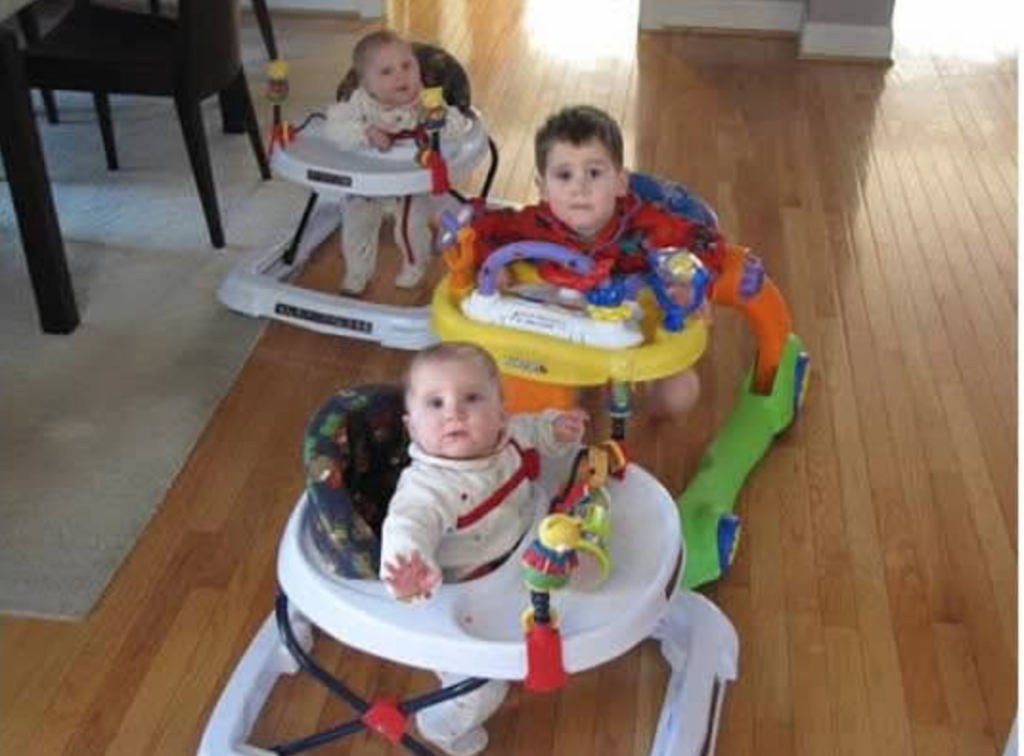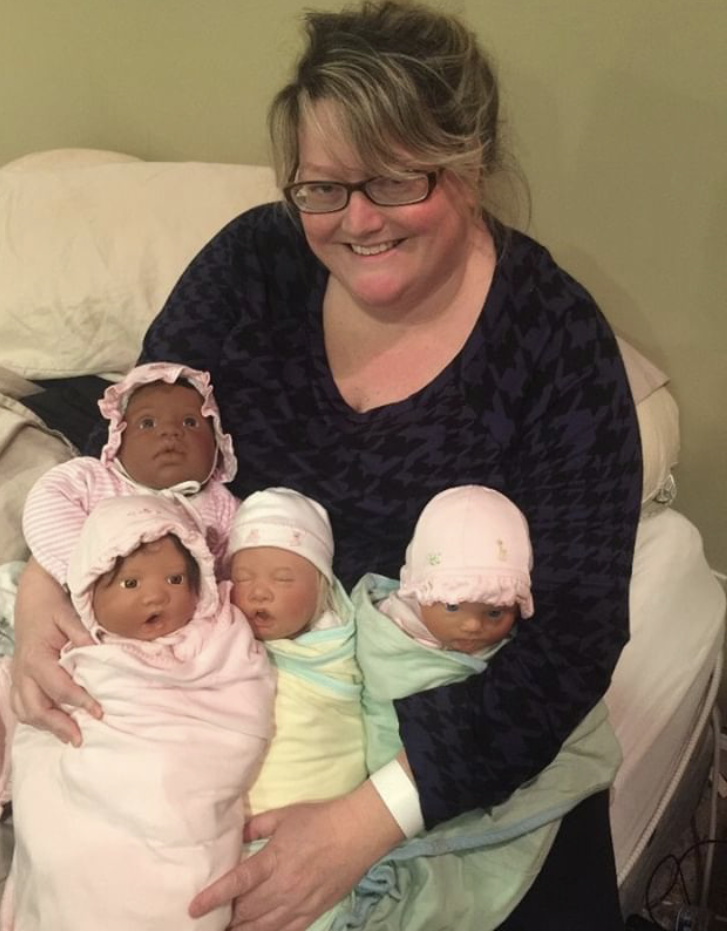Crying it Out: Parents Edition
One of the questions every parent of multiples gets asked is: “What do you do when the babies cry at the same time?” Below is, Crying it Out: Parents Edition, a real answer from Denise Iacona Stern. Denise’s newborn twins arrived when her baby boy was just 17 months old.
Crying it Out: Parents Edition
I will never forget when my sweet-natured 22 month- old son had night terrors and my twins were 4 months old; still teeny girls getting up overnight to eat. One night after soothing my son back to sleep, he got out of his toddler bed and inadvertently locked himself in his room. When he realized what had happened, he started screaming with fright. Naturally, this was the exact moment the twins loudly awakened for their 1am feeding.
And of course, the little key we use to pop open locked doors had fallen behind the doorframe.
And of course, the back-up key fell behind the other doorframe.
And of course, my husband was traveling for work.
Now – all three of my babies were screaming and crying. Screaming from fright, from hunger, from confusion. They were screaming from not knowing where mom was or if I would ever come to comfort them. Then, they realized their siblings were screaming which led to more hysteria. Three children in a red alert screaming panic in the middle of the night is a very special brand of parental torture I don’t wish anyone to know.
So what door do you choose?
Help the anxiety-riddled toddler with no quick way to get him out of his room? Or begin the hour long cycle of feeding the frantic infant twins?
I chose to run to the garage and dump random drawers until I found something to break my son out of his room. Then, I held him as tightly as I could while I did the world’s worst job of preparing two bottles for two babies with one hand. I am not sure how long the house resonated with screams at 1 am. But I do know that if anyone’s brain cells were destroyed from excessive crying, they were all surely mine.
I share this with you because the “crying it out” decision is one most parents struggle with at some point. It is a completely personal choice. But for parents with multiple children, the decision is sometimes made for us because we have more kids than hands. Despite our best efforts, crying it out happens at night and during the day, and our kids are just as loved and well-adjusted as everyone else’s.
So you’re saying they should cry it out?
This is not to say “Yay for crying it out!” It’s to tell moms, that for every handful of times baby has to cry because you are having a crisis with another child or you yourself are in crisis, you should not negate the 40 million other times you respond swiftly and efficiently. Otherwise every mother of multiples, every parent with 5 or 6 kids, and every mom that has to use the bathroom occasionally would be raising emotionally damaged children.
A six-year study published in the American Academy of Pediatrics Journal states, “There was no evidence of differences between intervention and control families for any outcome.” NPR also cited this study and other science based information in 2019. Guess what this means? Whatever you choose for your family is the RIGHT decision. While the data shows that crying it out does not cause harm to developmentally ready babies, I think we can all agree this doesn’t mean we dump the child in the crib unprepared for sleep and walk out.
So, what’s the best way to teach a child to sleep through the night? By making educated decisions that parents feel are right for their baby and their family. Trust your intuition and do what feels right because that is really all we parents have. Even science proves it.

it Out: Parents Edition – Sleep Training Do’s and Don’ts
If you do choose to sleep train, there are step-by step guides and schedules. As a general rule of thumb here are some do’s and don’ts:
DO:
- Get Pediatrician’s Input: Consult with your pediatrician during your baby’s 4-month well-check to discuss their readiness for sleep training. It’s essential to have professional guidance and ensure that your baby is developmentally ready for any changes in their sleep habits. It’s also crucial to be assured your baby doesn’t to wake to east for at least 6-8 hours.
- Make Gradual Changes: Once you’ve gotten approval from your pediatrician, a gradual approach to sleep training is often recommended. This means gradually weaning off overnight feeds and establishing distinct daytime and nighttime sleep routines over 7-10 days. Longer is fine too. The point of gradual change is to make adjustment from eating over the course of the night, to stopping feeds less shocking.
- Follow Baby’s Cues: Your child doesn’t care about The Schedule. If they are hungry or uncomfortable, it’s perfectly fine to feed and soothe them.
DON’T
- Use this or other blogs as Medical Advice: Your child’s primary care physician needs to be part of any decisions regarding sleep training or changes to their feeding and sleep habits.
- Make Quick Changes: While some people opt for “cold turkey”, it is generally recommended to follow a gradual plan that takes about 10-14 days. Gradual transitions can be gentler on both parents and babies.
- Force Rigid Routines: If napping or feeding becomes a constant struggle or fight, it’s time to explore alternative approaches. Be flexible and responsive and don’t rule out illness, teething or other physical needs that are out of your baby’s control.

Categories
- Corporate Care & Partners
- COVID19 Archive
- En Espanol
- Expert Guides
- Hiring a Night Nanny
- Infant Safety
- Infant Sleep Hub
- Newborn Care
- Postpartum Health
- Twins & Multiples
- Work as a Night Doula
- zPost Archives
